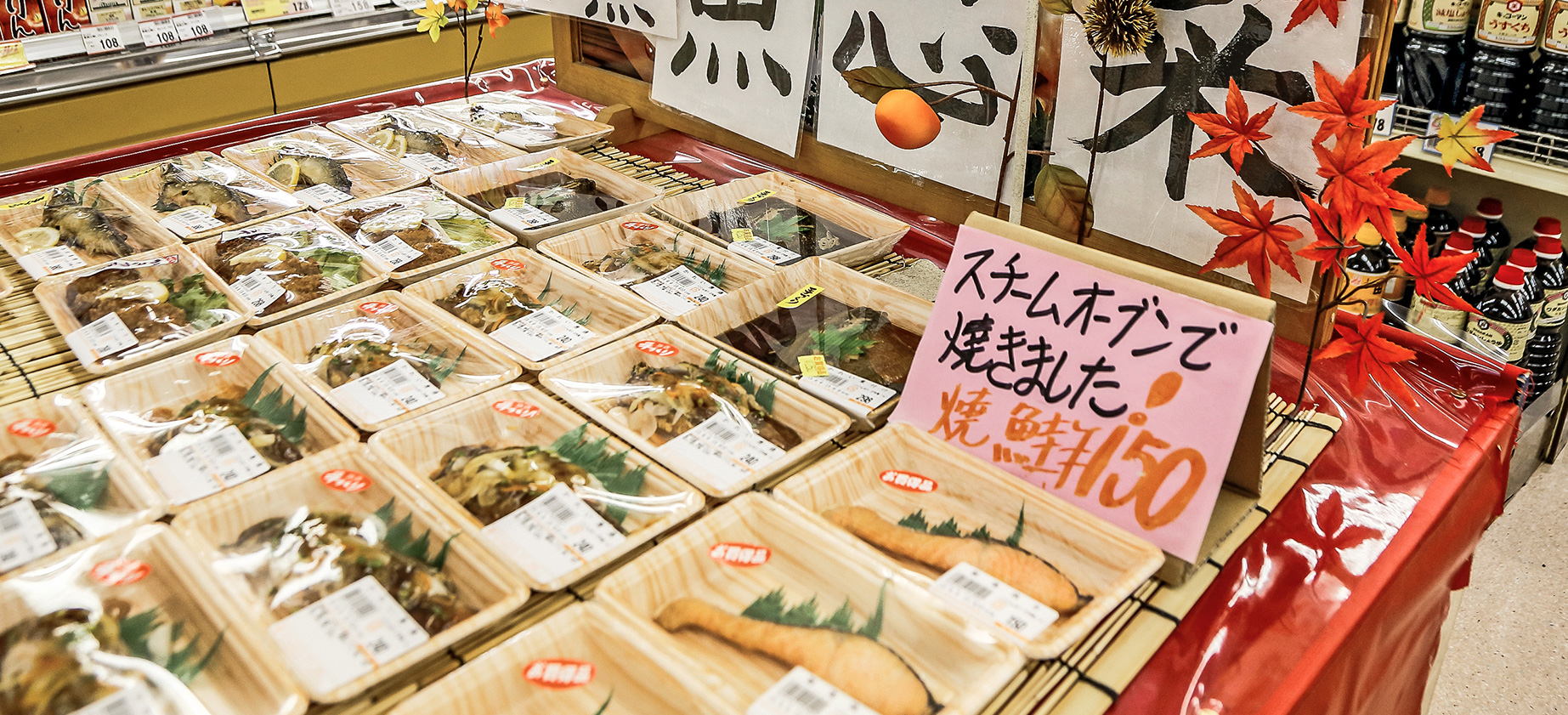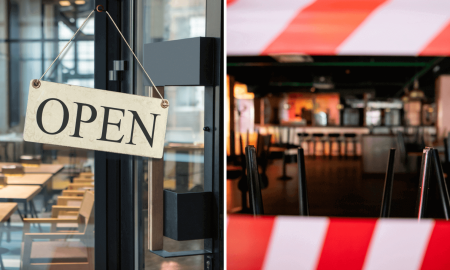Breakfast, lunch, dinner. Appetizer, main course, dessert. For many years, that was more or less how everyone at our latitude consumed food. But how many of us are still chowing down by the rule of threes? “Be home for dinner” was once such common practice, it required no further explanation. Mealtimes were routine and (more or less) accepted. Everyone cleaned their plates, eating whatever was put in front of them. It was less important what you were in the mood to eat, or even if you were actually hungry when dinnertime rolled around. Sound old-fashioned? No wonder.
Individual dietary choices, mobile lifestyles, new working hours and locations, the increased participation of women in the workforce, and the rise of one-person households are all transforming our nutritional landscape. On weekdays in Germany, barely over half the populace eats lunch at home; that number was twelve percent higher as recently as 2005. Breakfast, once the most important meal of the day, is now often wolfed down hurriedly on the way to work. Rather than structuring our day-to-day lives, food now accompanies them. “Nowadays, people eat when they’re hungry, when they have time, or when they feel like it, and they often just grab a quick snack by themselves,” says renowned food expert Hanni Rützler, who anticipates “the end of mealtimes (as we know them).”
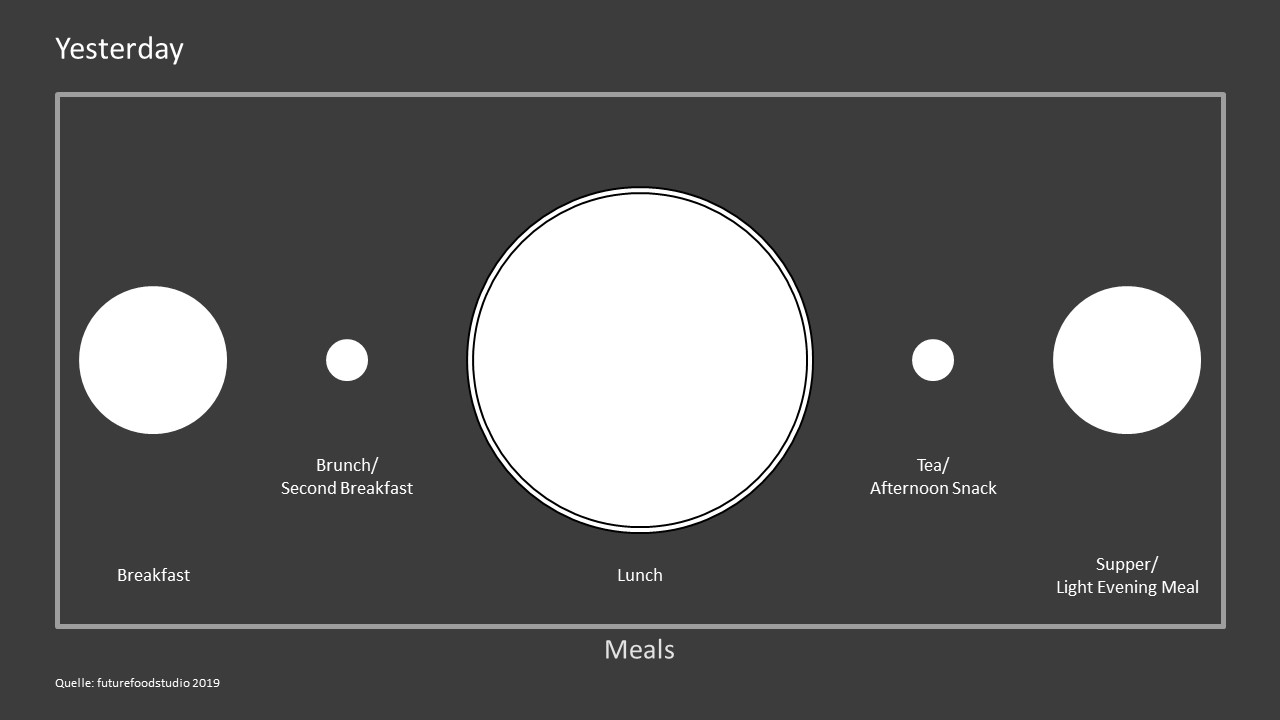
Image: futurefoodstudio 2019
So what happens then?
Snackification! The word was originally coined in the US, to express the growing trend towards quick mini-meals throughout the day. In one survey, 92 percent of American millennials indicated that they ate a snack instead of a meal at least once per week. Half of those surveyed said they did it four times per week or more. But these aren’t the chips, candy bars and pizza bites you might associate with the word “snacks”. In fact, 52 percent of those surveyed said that healthiness was a key factor in their choice of snack.
Heightened awareness of high-quality, sustainable food has become a core element of many lifestyles – more and more people have come to define themselves by how and what they eat. Central Europeans are no different in this regard: sausages, pizza, and kebabs have made way for healthy bowl food. Today’s customers don’t just expect food to be readily available wherever they are, they also want it to reflect their own values. “Fast good, not fast food” is the name of the game, and snackification hasn’t changed that.
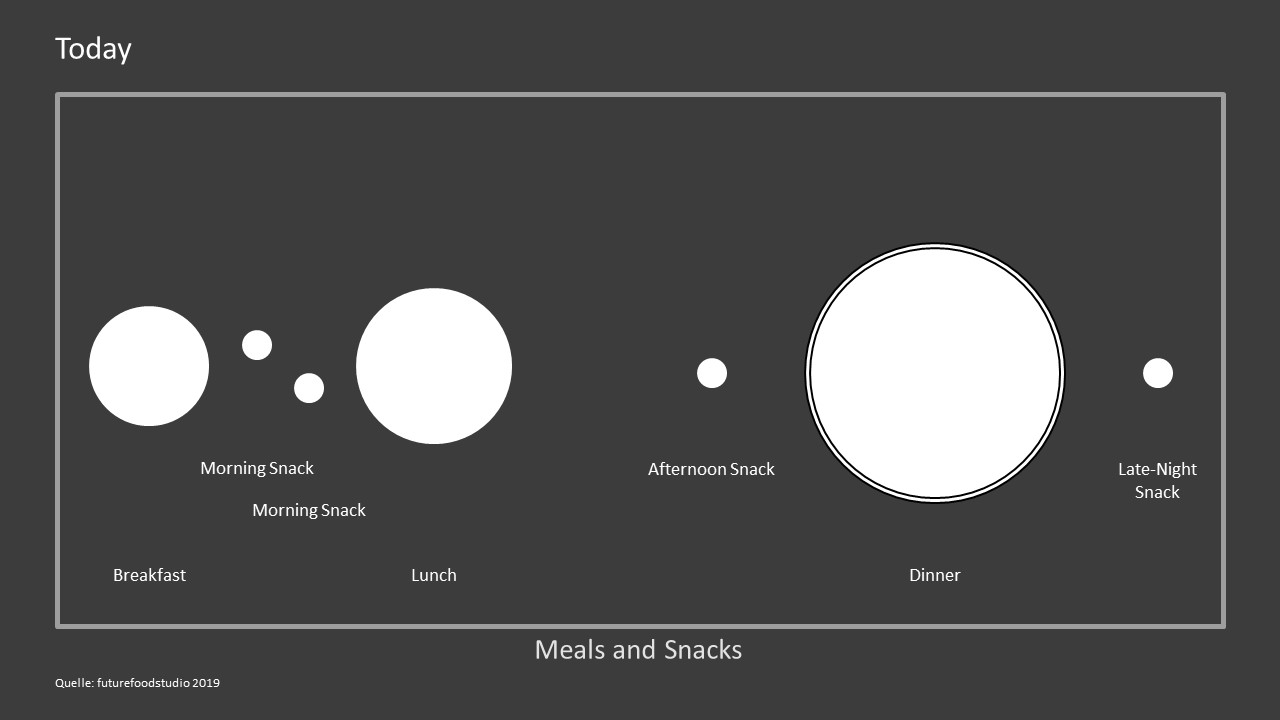
Image: futurefoodstudio 2019
The signature dishes of our time
Poke and Buddha bowls are wildly popular nowadays, because they tick so many of the snackification boxes: they can be prepared quickly and individually to ordered, they’re often vegan and always include plenty of veggies, along with trendy grains (quinoa, millet), legumes, tofu, nuts, herbs, mushrooms, and seeds. Customers can watch their bowls being created directly, which offers a certain degree of transparency, and the finished products make convenient “quick bites”. They’re lighter than a full meal, and they give customers the flexibility to try out new things. “The unlimited variety these healthy bowls offer makes them the signature dish of our food culture, which emphasizes individualization, mobility, and healthy nutrition,” Rützler notes.
But mini-meals from other cultures arrived on the scene even before bowl food. Tapas, bento boxes, and mezze are the Mediterranean, Asian, and Levantine answers to mini-meals, and they’re all on the rise in Central Europe. What was once relegated to the status of appetizer, snack, or “I’m just going to have something light” is now very much a viable option for the actual meal. Traditional menus are being replaced with a wide selection of small, aromatic dishes and plenty of variations. Falafel with hummus and mint yogurt is now a common substitute for ordinary lunch, and fruit snacks have given way to smoothie bowls. “In our future dining culture,” Rützler says, “any food, any drink, and any dish will have the potential to become a mini-meal: snacking will become the new way of eating.” Food is becoming lighter, healthier, and more cosmopolitan.
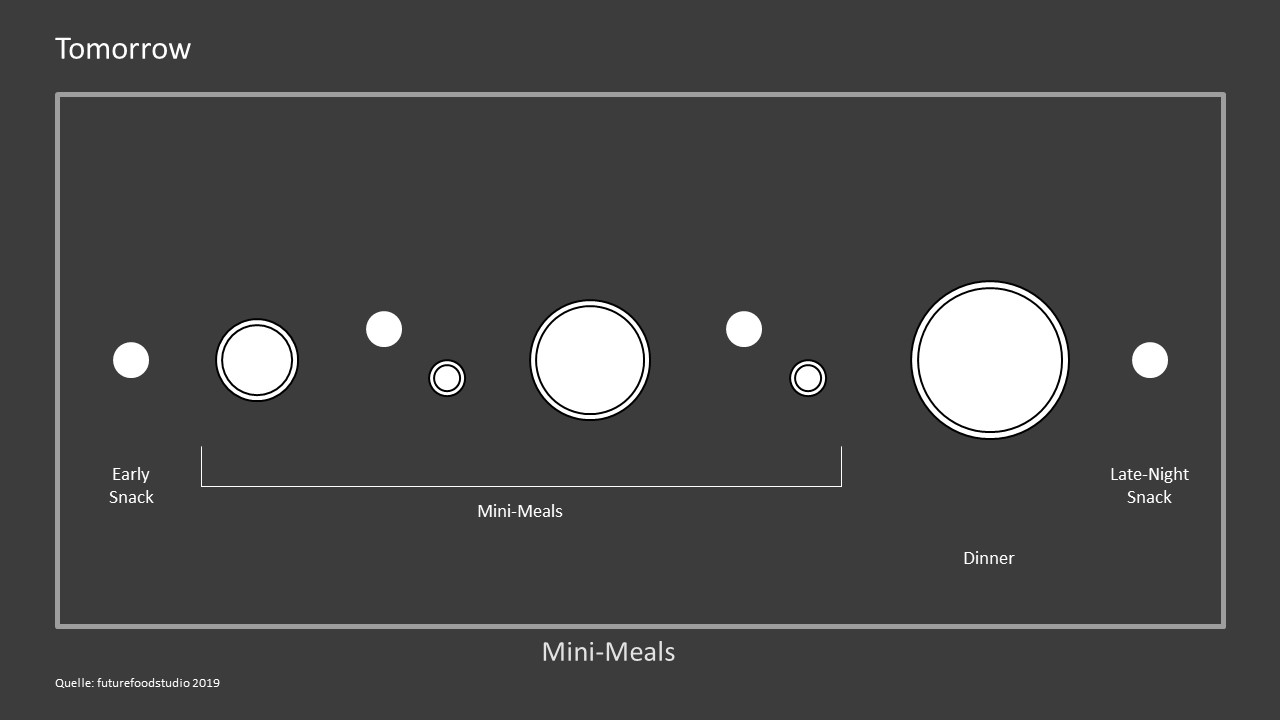
Image: futurefoodstudio 2019
More flexibility required
Snackification creates challenges for the traditional hospitality industry, especially when it comes to portion sizes and hours of availability. The idea of breakfast being available until afternoon, or even around the clock, may have bewildered some traditionalists at first, but expanding the definition of “breakfast” was a response to customer needs, and especially the needs of the young, urban populace. It was the first sign that people had begun wanting to eat what they wanted, when they wanted. Spontaneity and individual enjoyment have replaced rigid dining cultures, meal sequences, and combinations.
At Le Dauphin in Paris, for example, Inaki Aizpitarte demonstrates that snackification has a place alongside traditional dining, even in France – in this case, it’s literally beside his excellent restaurant, Le Chateaubriant. Le Dauphin features tropical and Basque-inspired mini-meals, with soup in the afternoons and tapas until late at night. Mini-meals also give experimentally minded restaurateurs space to introduce their guests to new dishes, because the smaller portions act as an invitation to culinary adventures. According to Rützler, most of the restaurant industry is still too focused on classical conventions. “Snacks are becoming mini-meals that fit customers’ nutritional expectations,” the food expert explains, “which means that concepts, portion sizes and service times need to be adapted as well.”
Further reading:
Snackification: The fluid dining culture of the 21st century


